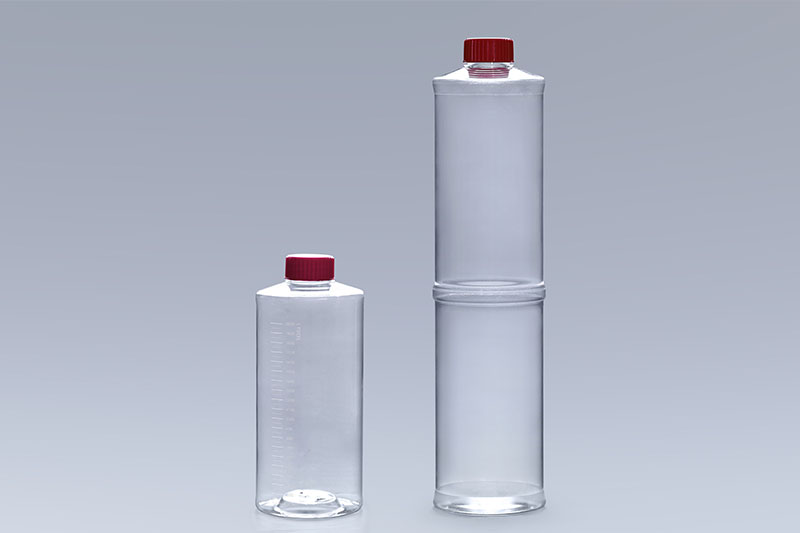Cell culture roller bottles are one of the common consumables for cell culture, which is suitable for the cultivation of animal and plant cells, bacteria and viruses. With the vigorous development of the field of biomedicine, some pharmaceutical companies have continuously increased their investment in new drug research and development, and cell consumables have gained popularity. With rapid growth, its production process is also constantly updated and iterated.
Due to the particularity of the application industry, cell culture roller bottles have high quality requirements, and there are strict standards from the material of the bottle to the production process. Cell culture roller bottles use medical polymer materials as raw materials. Generally, one-step injection stretch blow molding process is used, also called one-step injection stretch blow production process. The principle is to use the heat retained during preform molding to stretch to blow molding. Compared with the products produced by non-stretch blow molding, this process is thinner, the products are not easy to be polluted, the molding is diversified, and the scrap rate is low.
Compared with the two-step injection stretch blowing process, the one-step process has been greatly optimized in terms of molding accuracy and process structure. It is a new technology to achieve stable product production and save energy.
The improvement of cell culture roller bottles production process is an inevitable trend of scientific and technological development. With the continuous development of biological research technology, cell spinner bottle will play a greater role in the cell and tissue culture required by large-scale production.
The FAI climbed 5.9 percent year-on-year in the first 11 months of 2018, quickening from the 5.7-percent growth in Jan-Oct, the National Bureau of Statistics (NBS) said Friday in an online statement.
The key indicator of investment, dubbed a major growth driver, hit the bottom in August and has since started to rebound steadily.
In the face of emerging economic challenges home and abroad, China has stepped up efforts to stabilize investment, in particular rolling out measures to motivate private investors and channel funds into infrastructure.
Friday's data showed private investment, accounting for more than 60 percent of the total FAI, expanded by a brisk 8.7 percent.
NBS spokesperson Mao Shengyong said funds into weak economic links registered rapid increases as investment in environmental protection and agriculture jumped 42 percent and 12.5 percent respectively, much faster than the average.
In breakdown, investment in high-tech and equipment manufacturing remained vigorous with 16.1-percent and 11.6-percent increases respectively in the first 11 months. Infrastructure investment gained 3.7 percent, staying flat. Investment in property development rose 9.7 percent, also unchanged.
 English
English



















































 Cell Culture Roller Bottles
Cell Culture Roller Bottles